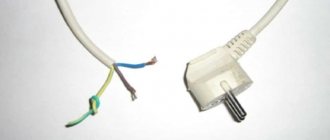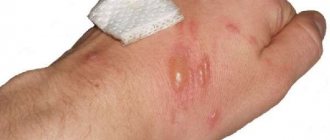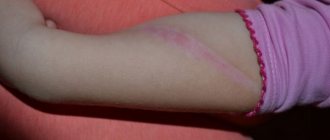Protect yourself from skin cancer.
Run to the doctor immediately and remove the damaged birthmark.
Some articles on the Internet greet readers with approximately the same advice. After them, you get the feeling that it is almost impossible to live peacefully into old age - there are too many mortal threats around.
Fortunately, the danger of damaged moles or nevi is greatly exaggerated.
Yes, they can cause unpleasant consequences. However, many people have encountered this phenomenon not for the first time and are still alive and well.
Why do moles get injured?
For different reasons. Sometimes they are accidentally cut off while shaving or damaged when dropped. Children are especially often troubled by neoplasms. They just love to scribble them. Or even tear it off.
Sometimes nevi rub against clothing or shoes - changing clothes or removing moles helps prevent this.
A myth has taken root in popular culture - scratched nevi turn into cancerous tumors. How truthful is he?
Malignant neoplasm is one of the possible consequences of an injured mole. But there is no evidence yet that these phenomena are directly related.
Sometimes a damaged nevus degenerates. However, why does this happen?
Did the injury trigger the process of an ominous transformation, or was the birthmark already potentially dangerous?
So far no one has answered these questions.
Is it necessary to remove an injured mole?
No. At least until a complete examination by a dermatologist, only a doctor can diagnose a malignant neoplasm.
Another point refutes the mythical danger of damaged nevi - doctors often take part of the tumor for examination. This test is called a biopsy. It is doubtful that doctors deliberately lead patients into a cancer trap for the sake of an accurate diagnosis.
Now let's move on to practical issues.
What to do if you have injured a mole?
So, damage could not be avoided. A bleeding wound appeared at the site of the tumor, which should not be left just like that.
What to do if a mole is cut or torn off?
Don't worry. It is easy to care for, and you will not need rare and expensive medications.
First you need to protect the wound from infection. Treat the neoplasm with an antiseptic. Chlorhexidine is best suited - it is a cheap remedy that is available in any pharmacy.
But we do not recommend smearing wounds with iodine. In this case, you will not be able to notice signs of possible inflammation.
Now about more severe cases.
What to do if you injured a mole until it bled?
Soak gauze or a piece of cotton wool in hydrogen peroxide and then apply it to the wound. This will stop the bleeding. Then you can fix the cotton wool with bandages or adhesive tape. This will prevent infection.
Other means will also help you.
How else can I treat an injured mole?
After disinfecting the wound, care must be taken to ensure that it heals properly. This will take more than one week. Usually the damage heals in about 20 days.
Which ointment is suitable for treating an injured mole?
To quickly restore the skin, use zinc ointment or calendula tincture, which disinfect, relieve inflammation and dry the wound.
Do you need a doctor's help?
You can easily heal a small wound on a nevus. First of all, it is important to prevent infection, and then the damage will heal without complications.
But then you can go to the doctor. Just in case.
It is not immediately clear in all cases why the tumor was injured - sometimes people only notice a bleeding wound. Then it’s worth taking a closer look at the damaged nevus.
Some injuries are caused only by strong friction or pressure, but others occur even with mild contact. This usually indicates the degeneration of a mole.
An examination will help to detect a cancer threat in time.
Not all your actions will be uniquely beneficial for the damaged tumors - some actions will only worsen the condition of the mole. Next we will present the Top 3 dangerous actions when nevi are injured.
If you rip off a nevus on your neck
Moles located on the neck are often rubbed by chains or items of clothing. Thus, there is a risk of accidentally tearing them off. If it was melanoma, then you should immediately consult a doctor so that he can cleanse the skin of its remnants. Remember that the risk of cancer in this case increases significantly.
cauterize the area with hydrogen peroxide or alcohol as quickly as possible If there is enough skin left on the area, it can be submitted for histological analysis, which will reveal whether the mole is malignant or not. In summer, try not to open the place where it was exposed to sunlight.
And remember, if a mole on your neck constantly causes you discomfort and there is a risk of tearing it off, then it is better to immediately consult a surgeon.
What should not be done if a mole is injured, torn off or cut off?
So, the injured mole needs help. Unfortunately, she doesn't always get it - some people follow the wrong advice from the Internet, while others make their own mistakes.
Here are three common mistakes:
1. Lack of wound care
Yes, sometimes carriers of damaged nevi simply hope that the tumor will heal on its own. There are not many of them. But there is a group of people who are accustomed to turning a blind eye to “light scratches.” Neglecting injuries can lead to blood poisoning. It is a rarity. But it happens.
2. Self-medication
This mistake usually does not lead to serious consequences. In most patients, moles heal safely and do not degenerate. But it also happens differently. Injured tumors rapidly mutate into insidious cancerous tumors that attack healthy tissue.
3. Removal of nevi before examination
Some people want to quickly get rid of bleeding, damaged moles. They are not interested in what caused the injury. Are these neoplasms dangerous or not? They run to the nearest beauty salon and demand that the nevi be urgently cut off or burned. Because of this, doctors do not detect skin cancer on time.
One more thing - do not take the word for everything that is written on the Internet on the problem that interests you. Even us.
Many continue to spread mythical information about the threat of traumatized tumors. It is also important to take into account differences between patients. In one person, the doctor will identify a precancerous tumor, while in another, all moles will turn out to be harmless. So your situation may be different from other people's examples. And radically.
If you have injured a mole to the point of bleeding, then first of all rely on the opinion of your doctor, and not on the advice of strangers who have not seen your nevi.
From the description of errors we return to wounded neoplasms. What problems do they cause?
Symptoms of a violation of the natural state of a mole
Today, there are several of the most common symptoms of a violation of the general condition of the red growth. If you notice that:
- The skin has jagged edges around the mole
- There is some asymmetry in shape
- The color of the mole has changed
- The sizes have become slightly larger
If pain or a feeling of discomfort appears, it is urgent to take appropriate measures aimed at establishing the cause and further treating the phenomenon on the skin. Trying to treat small red moles on your own is inappropriate, since self-medication procedures can cause significant harm to the body through the introduction of intermittent infectious diseases or, God forbid, the formation of malignant tumors.
It is for this reason that every patient, if possible, should visit a specialist on these issues, since in modern medicine such problems can be solved by several available methods:
- Electricity
- Cauterization
- Laser removal
- "Knife Radio"
Together with any of the methods described above, the patient will be able to get rid of the unpleasant growth on the skin and completely eliminate the pain that torments him if the mole begins to turn red and bleed.
What will happen next to the injured mole?
Any wound on a nevus or on regular skin will not disappear overnight. It will hurt a little and turn red, that is, inflamed. This cannot be avoided.
However, other unpleasant symptoms rarely appear.
Recommended actions:
- Disinfect the wound
- Stop the bleeding
- Wait for healing
The wound heals on average in two to three weeks.
What to do if an injured mole festers and hurts?
In this case, you may need the help of a doctor, because the appearance of pus from the wound may indicate complications.
Without them, the skin heals according to the standard scenario:
- In two days a protective crust grows
- Within two weeks the crust disappears
- In three weeks the wound disappears
It is very easy to recognize what an injured mole looks like. It is difficult to find a person who has never received scratches, bruises or other injuries in his life. They look the same on nevi. The protective crust on the new growths is clearly visible.
Although you can identify a wounded mole at home, to identify signs of degeneration you need the help of a doctor.
Why can't moles be removed?
Moles on the skin are benign formations that form when the development of the upper layer of cells fails. For them to develop into malignant formations, the harmful effects of ultraviolet radiation are sufficient. In addition, hereditary factors and permanent damage to the spot also play a role.
Many, contrary to prohibitions, open, rip off or bandage nevi, but this is very dangerous, including for life. If they are constantly exposed to mechanical stress, the results will be as follows:
- first it will become inflamed;
- then there will be pus;
- malignant transition to melanoma.
However, if you accidentally burst a mole and quickly disinfect it, then nothing bad will happen.
Should I see a doctor? If yes, which one?
We have already spoken about the examination at the clinic. To be on the safe side, it's better to go.
When should I make an appointment?
There is no need to rush here - at least wait for the wound to heal and only then contact a doctor. In about three weeks.
All this time, the wound is covered with a protective crust, which interferes with diagnosis.
What to do if an injured mole takes a long time to heal?
It's important to know why. If the wound is suppurating, do not wait three weeks and immediately make an appointment with a surgeon.
Sometimes the skin just heals slowly. Due to the characteristics of the body. In this case, wait for complete recovery, and then show the healed nevus to the doctor.
Which doctor should I make an appointment with?
We have already talked about complications due to injury - this will require a visit to a surgeon. But a dermatologist checks for skin cancer. He specializes in skin diseases and identifies signs of degeneration in any tumors.
See a dermatologist if the injured mole increases in size. The growth of nevi is a dangerous sign. Large tumors are more likely to turn into cancer.
Unfortunately, the enlargement of a mole is not always noticeable.
It needs to be checked regularly.
We advise everyone to contact the Ufa HEALTHY SKIN CENTER
Nevi (moles) are very easily injured, especially convex and overhanging ones. Therefore, it is important to take precautions.
When sunbathing, do not expose yourself to heatstroke and sunburn! Lubricate your skin with a cream with a protective composition against ultraviolet rays. Fly to hot countries when the sun there is not so exhausting. Avoid wearing clothes that are too tight to prevent moles from becoming injured due to friction against rough fabrics.
During water procedures, use only soft washcloths. Be especially careful when handling shaving equipment.
When caring for your appearance, do not pull out or pluck hairs from moles - shorten them with scissors.
Consult a dermatologist and it is better to remove moles located in places of potential injury: on the chin, chest, abdomen, and in the perineal area. It is better to plan the removal procedure for autumn or winter, when the exposure to ultraviolet radiation on the operated skin is minimal.
Keep an eye out for newly appearing moles. You should be alarmed if they begin to grow unexpectedly quickly, change their color, shape, or crack, peel, or hurt. Don't be lazy, see a doctor!
Address: Russia, Republic of Bashkortostan,
Ufa, st. Revolutionary, 70
How to properly monitor a mole after an injury?
Nothing complicated.
Just take a photo of the new growth every day.
Place a ruler next to it. This way you will know what to look for to estimate the size of the growth.
Constant observation is very useful if an injured mole does not heal for a long time.
It helps make a diagnosis. At your appointment, show the doctor how the tumor has changed and over how long.
How to photograph a nevus?
We recommend using a camera that will allow you to take high-quality photographs. Any changes are clearly visible on them. It's difficult to take photos like this with a phone camera.
We sorted out the observation.
What about the timing of treatment for damaged tumors?
Injury factors
There are several types of nevi, each of which has an individual degree of risk of injury:
- Flat moles - externally similar pigmented structures do not rise above the surface of the epidermal cover, which significantly reduces the risk of mechanical damage to a mole of this type.
- Convex moles are formations that protrude beyond the boundaries of the surface layer of the skin. Convex nevi are often exposed to traumatic effects due to contact with tight clothing, accessories and shoes, as well as during the process of combing, washing or performing certain physical work.
- Hanging moles - such neoplasms are most often subject to injury, which is due to their morphological characteristics.
The last two categories of nevi require very careful handling and constant monitoring. In addition, the risk group, whose representatives often encounter damage to skin nevi, usually includes children and women. The latter top this statistics due to their adherence to uncomfortable tight clothing and various accessories that often injure the body of the mole. Children scratch or tear off moles often unconsciously, during play.
What if you scratched a mole and it started bleeding?
Is it necessary to urgently remove a mole after an injury?
We repeat - hasty surgery is harmful. If you immediately remove an injured mole, you may miss the signs of a cancerous tumor.
It is very dangerous.
Imagine - a person got rid of a damaged nevus and believes that the problems are behind them. And now my health is deteriorating. He goes to the doctor, spends time and money on all sorts of tests, and then finds out that skin cancer has metastasized. A malignant removed mole managed to leave deadly gifts in the body.
Remember - any tumors, healthy or injured, cannot be removed without preparation. That is, first get examined. Get an accurate diagnosis. And only then sign up for the elimination of an irritating or dangerous nevus.
Diagnostics also helps determine the degree of threat of suspicious growths.
Why you shouldn't panic
According to recent studies, the risk factors for developing melanoma, in descending order of danger, include the following: fair skin, a history of sunburn, prolonged exposure to the open sun without protection, living close to the equator (for us, the further south, the higher the risk), or high in the mountains, the presence of more than 50 pigment formations on the skin, heredity, immune disorders. As you can see, having fair skin and overdoing it on the beach or going to the solarium is more dangerous than injuring a nevus when shaving.
But you should not neglect a visit to the doctor. Firstly, consulting with a specialist is safer than ignoring the problem. Secondly, only a doctor can make a diagnosis and suggest further actions appropriate to the situation. Be healthy!
What to do if an injured mole does not heal?
We have already touched on this issue.
If the tumor is simply healing slowly, and there are no signs of suppuration, then it is better to wait a little longer. For some, wounds heal at a slower rate. There is no way to know in advance how quickly a wound will disappear.
Usually in two to three weeks.
But these are average terms. Sometimes an injured mole heals for a long time without the influence of external factors. In other cases, it occurs due to certain diseases.
After three weeks, go to the doctor with an unhealed wound - at least he will determine the reason for the slow recovery of the skin. At the same time, he will check the growth for signs of cancer.
Finally, let's talk about choosing a medical center.
A little about moles
Essentially, moles are considered benign epidermal growths consisting of cells that contain excess amounts of natural pigments, such as melanin. The formation of such structures can be caused by a variety of external and endogenous factors, ranging from hormonal imbalance to ultraviolet influence. Most often, nevi appear on the body in childhood, and in adulthood their formation may be a manifestation of a physiological norm, however, this may be a signal of the emergence of a pathological process, for example, cancer.
Features of mole injury by location
There are places on the human body where moles often get caught or scratched. These include:
- collar and neck area;
- face;
- underbelly;
- depressions in the groin;
- armpits;
- scalp;
- areas under the breasts.
Doctors' advice, if you have torn off a mole in such areas, boils down to one thing: go to a medical institution and remove the nevus using minimally invasive techniques. This is done to eliminate the risk of inflammation, suppuration, and degeneration into a malignant tumor.
If you injure formations on the skin, you can feel severe and sharp pain, sometimes bleeding.
Warts have different sizes, shapes and types; they can be convex, hanging, or flush with the skin. When convex and flat moles are damaged, a person feels a burning pain and they begin to bleed.
Patients ask doctors what treatment a birthmark on a leg, arm, back or shoulder, intimate area or buttocks needs if damaged. There is no difference in what to do with a damaged wart located on different parts of the skin. It is better to remove injured formations in any area of the body.
It is difficult to keep track of damage to nevi in children; they often develop scratches that affect age spots. Children may confuse a mole with a pimple and start squeezing it out, leading to traumatization of the nevus.
Pediatrician Dr. Komarovsky advises parents not to panic if age spots appear in a child; the cause is a natural process. But monitoring their development and traumatization is a mandatory condition; it is necessary to take action so that the condition of the child’s skin does not pose a risk of developing oncology.
Medical classification of melanomas
To determine the stage of melanoma, the Unified Staging System is quite informative, which distinguishes 4 stages - according to the thickness of the tumor and the depth of its invasion according to Clark:
- 1 – tumor thickness up to 1.5 mm with invasion level 2-3;
- 2 – tumor thickness up to 4 mm and invasion level 4-5;
- 3 – regional presence of metastases about 3 centimeters in diameter;
- 4 – distant metastases.
Melanoma can occur in both cutaneous and extracutaneous forms (10-20%) - with localization on the mucous membrane of the esophagus, rectum, genitals, eye mucosa, etc. The proportion of cutaneous forms is incomparably greater - 70-80%, but poses no less a threat for a large number of people around the world.











